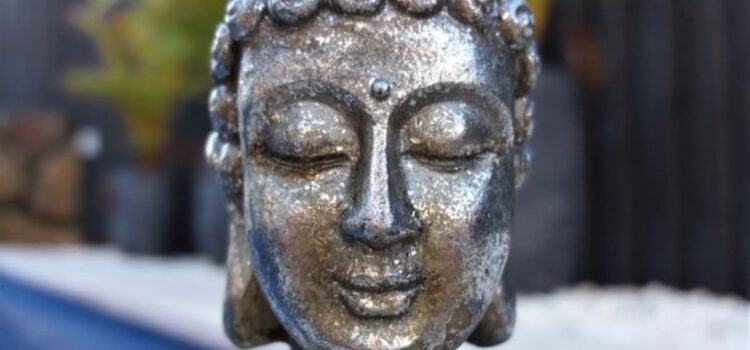

This article is an excerpt from the Shortform book guide to "The Happiness Trap" by Russ Harris. Shortform has the world's best summaries and analyses of books you should be reading.
Like this article? Sign up for a free trial here .
What is the thinking self? Do you agree with Descartes’ philosophical notion that “I think, therefore I am?”
We have two minds or “selves” that affect our response to events: the thinking self and the observing self. The thinking self provides a running (judgmental) commentary on events, while the observing self neutrally observes this running commentary.
In this article, we’ll define the thinking self and the observing self and explore the relationship between the two minds.
Defining the Thinking Self
Harris explains that the thinking self, or “conceptualized self,” is what most people in Western society think of when we think about ourselves, or who we are. (Shortform note: And it’s no accident that we think this way. One of the linchpins of Western philosophy is René Descartes’s famous cogito ergo sum: I think therefore I am. In his Meditations on First Philosophy, Descartes takes his own thoughts as evidence of his existence.)
According to Harris, the thinking self operates primarily through words and images. It constitutes an uncontrollable running commentary on our lives. Any thought you have, no matter how serious or trivial, comes to you through the thinking self.
In ACT, the thinking self is a product of hundreds of thousands of years of evolution to avoid threats and danger. The thinking self’s running commentary is meant to keep us safe from harm, but the conditions under which the thinking self evolved no longer pertain to our modern existence. Therefore, most of its efforts are wasted. Furthermore, the thinking self’s constant stream of negative thoughts and images decreases our quality of life—and struggling with those thoughts and images only makes our predicament worse.
| The Thinking Self Categorizes Experiences In Mindfulness in Plain English, Bhante Gunaratana describes ordinary thought (or the thoughts of the thinking self) as an automatic response to the stimuli we experience in our lives. Anything can cause the automatic process of thought to respond: an attractive person, a barking dog, or a traffic light. Gunaratana says that our brain separates our experiences into three categories: good, bad, and neutral. Our brain deals with these types of experiences in different ways: When an experience is good, we naturally want more of it, but our brain also automatically presents us with the idea that the good experience will end eventually, which means that we can’t fully enjoy the experience of good things. When an experience is bad, we try to avoid it. This is similar to Harris’s argument about control strategies creating a happiness trap. Unlike Harris, Gunaratana does not argue that attempting to avoid bad experiences generates more bad experiences. When an experience is neutral, we tend to view it as boring and ignore it. Gunaratana asserts that this categorization causes us to be constantly dissatisfied with life—we always want more, want less, or want something more exciting, rather than simply being content. As an antidote, he proposes using meditation to achieve mindfulness, or awareness, in order to free ourselves from the automatic process of thought that either chases good feelings, flees bad feelings, or ignores neutral ones. Harris will propose a similar solution—although he doesn’t promote meditation by name—in the form of the observing self, which he defines as a kind of awareness that underlies the experience of consciousness. |
Harris notes that many forms of psychology and self-help try to help us control the thinking self. For instance, the positive thinking movement tries to control the thinking self by saying that we can replace the negative thoughts of our thinking self with positive ones. (Shortform note: In The Power of Positive Thinking, Norman Vincent Peale argues that you can cultivate a peaceful mind by emptying your mind of negative emotions each day, saying peaceful words like “tranquility” and “serenity,” having positive conversations with others, and spending at least 15 minutes a day in silence’s.)
ACT takes a slightly different approach by connecting us with the other half of our mind: the observing self, which has the power to mediate the thinking self’s influence on our lives.
Defining the Observing Self
The observing self observes the thoughts of the thinking self, the feelings of the body, and the external world we experience through our five senses. While the thinking self interprets our experiences, the observing self directly experiences reality.
To understand the difference between the thinking and the observing self, imagine you’re at a festival, slow-dancing with a partner in a crowd. You’re immersed in the scene, engaged with your observing self. As you move your body in tandem with your partner’s, you aren’t actively thinking about where to place your next step. You aren’t focused on the crowd, only the space directly in front of you. You move in time with the music and your partner’s body.
Then, your thinking self derails your observing self by distracting you from the immediacy of your experience: You start to second-guess your movements. You feel the gaze of the crowd and wonder if you are a good dancer. Suddenly, you find yourself stepping all over your partner’s toes and tripping up what had once been an effortless flow.
Harris lists several characteristics of the observing self:
- The observing self does not change. As opposed to the thinking self’s running commentary of thoughts and images, the observing self is fundamentally fixed, stable, and unalterable. (Shortform note: This will become a crucial part of the mindfulness techniques Harris details later in the book.)
- The observing self is incapable of judgment and therefore perfectly accepts everything—including you. No matter what you do, the observing self does not think. Therefore, it cannot judge whether an action is good or bad, or whether a situation is fair or unfair. While the thinking self bombards us with thoughts, the observing self does what it always does: observes impartially.
- The observing self is invulnerable. While your body may undergo changes (such as aging) or experience damage, the observing self cannot be harmed. No matter how badly you are hurt, or how much you have changed, you can still observe.
- The observing self is not quantifiable. It has no material quality that we can examine. It cannot be manipulated, measured, or taken from you.
Harris describes the observing self as a constant, unchanging awareness that you experienced even before you had a name to give it. By connecting with the observing self, you can stop identifying with your thinking self.
| Self-as-Context ACT literature refers to the observing self as “self-as-context”—the alternative to the “conceptualized self,” or the person we think we are because of the running commentary of the thinking self. This terminology makes the concept of the observing self a bit more clear—in the self-as-context model, our thoughts, feelings, and experiences occur within the context of the self, rather than being identified with the self. Imagine the self-as-context as a playground and the individual thoughts, feelings, and experiences as children who are playing on the playground. Even when all of the children have gone home, the playground will still be a playground. It would be nonsensical to argue that the children are the playground—they often populate the playground, but they don’t define it. Elsewhere in the ACT literature, Harris emphasizes two major benefits of the self-as-context that he doesn’t mention in The Happiness Trap: 1) It provides us with a secure sense of self. In contrast to the conceptualized self, where we are our thoughts and feelings (both negative and positive) and therefore change rapidly from moment to moment or day to day, the self-as-context is a less variable configuration for our lives. 2) It can provide us with a transcendent sense of self. While Harris generally eschews mysticism in The Happiness Trap, the ACT literature suggests that the self-as-context is a “higher” and more enduring form of being than the conceptualized self. It’s not merely that we are not our thoughts and feelings, but that we are more than our thoughts and feelings. |
The Observing Self Is Your Meta-Awareness
Harris argues that the thinking self and the observing self are fundamentally different human faculties: As we discussed, while the thinking self operates as a running commentary on the events of your life, the observing self observes this running commentary.
You can think of the observing self as a kind of “meta-awareness.” For every thought you think, the observing self notices you thinking that thought; for every sensation you experience in your body, the observing self notices the sensation. Your observing self notices everything you experience—from your thoughts to your physical sensations to the world around you.
When you understand the relationship between the thinking self and the observing self, you can redirect the observing self’s attention away from the thinking self and toward other sources of input, like your five senses. In the following chapters, we’ll explain how this ability to redirect your attention is the foundation for mindfulness techniques that can alter the way you experience your thoughts, your feelings, and the world around you.
| Your Thoughts and Feelings Don’t Define You We’ve referred to the conceptualized self in relation to the thinking self, but it’s important to underscore that the conceptualized self is more than an entity that produces thoughts—it’s the person we think we are when we identify with those thoughts. Without the observing self, we can come to the conclusion that we are our thoughts, feelings, and urges. The ACT literature explains that when we identify with our thoughts and feelings, we can excuse behavior that would be inexcusable in a more objective context. For instance, if someone frequently gets angry and lashes out, they may begin to think of themselves as an angry person. Once they’ve adopted that identity, they may excuse their continued outbursts because they already believe that they’re an angry person. However, the observing self enables people to see that they are not their thoughts and feelings, but rather a context in which thoughts and feelings occur. With this insight, they can separate themselves from their thoughts and feelings, rather than feeling controlled by them. |

———End of Preview———
Like what you just read? Read the rest of the world's best book summary and analysis of Russ Harris's "The Happiness Trap" at Shortform .
Here's what you'll find in our full The Happiness Trap summary :
- Why trying to be happy is making you unhappy
- How to practice ACT, or Acceptance and Commitment Therapy, to become happier
- How to develop “psychological flexibility” toward negative feelings instead of eliminating them






